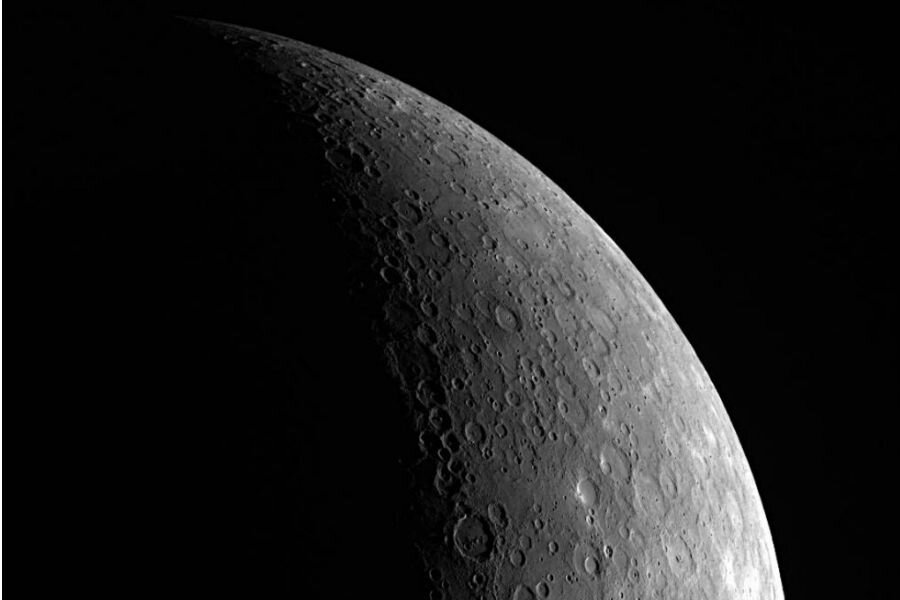Mercuryquakes? Planet nearest to the sun may have tectonic activity.
Loading...
Mercury, the planet in the solar system closest to the sun, remains one of the most mysterious bodies in the night sky. The small, inhospitable planet orbits the sun at an uncomfortably close distance, temperatures fluctuating between –173 degrees Celsius (–280 degrees F.) to 427 degrees Celsius (800 degrees F.).
But a recent study suggests that Mercury may share a rare trait with our much more hospitable planet Earth: tectonic activity.
If true, Mercury might be the only other planet in the solar system to experience earthquakes. Or, in the smaller planet's case, "mercuryquakes."
The study, published in Nature Geoscience, is based on images from the late NASA probe MErcury Surface, Space ENvironment, GEochemistry, and Ranging (MESSENGER) spacecraft. The probe launched in 2004 and orbited Mercury for four years between 2011 and 2015 before ending with a planned crash landing on the planet's surface in April last year. Scientists have been poring over the data collected by MESSENGER ever since.
In photos from the probe, researchers discovered a previously unknown feature on Mercury's surface: small formations known as scarps. Scarps form when rocks are pushed together and thrust upwards by pressure along fault lines. The first scarps recorded on Mercury were enormous structures photographed by the Mariner 10 probe over 40 years ago. The ancient, clifflike formations were pitted with craters, and seemed to indicate that the planet, while formerly geologically active, had been dead for millions of years.
The new scarps from the MESSENGER photographs are different. They are smaller and have not been impacted by asteroids, indicating relative youth in geological terms: less than 50 million years old. This would indicate that the planet's subsurface is still geologically active.
"This is why we explore," said NASA Planetary Science Director Jim Green in a NASA blog post. "For years, scientists believed that Mercury’s tectonic activity was in the distant past. It’s exciting to consider that this small planet – not much larger than Earth’s moon – is active even today."
The discovery is causing scientists to reevaluate what they know about planetary geology. Geologically active planets and moons have a warm inner core that creates a current that moves and cracks the solid surface. A planet like Mercury was thought to be too small to retain enough heat for geological activity.
It turns out, however, that the interior is apparently warm enough, and that there is enough liquid metal in or around its core to generate a magnetic field, making the alien planet more like Earth than most bodies in the solar system. Similar geological activity is shared by only by the moon and possibly Europa (a moon orbiting Jupiter) or Titan (a moon orbiting Saturn). While it is possible that Venus is another geologically active planet, the thick clouds around the planet have made a precise study of its geological processes impossible so far.
"The way that terrestrial bodies like Mercury, Earth and even the moon have evolved thermally is emerging as one of the puzzles that researchers need to solve in planetary science," Thomas Watters, lead author of the study, told Space.com.
The scarps on Mercury also indicate that Mercury is actually shrinking as it cools. While our moon has been shrinking for the same reason, Mercury's shrinkage has been more extreme over the past few billion years.
"Mercury has the potential for many more earthquakes than the moon, since it's contracted a lot more than the moon has," said Watters. Seismometers set up by Apollo astronauts detected 28 moonquakes ranging from magnitude 1.5 to 5 on the Richter scale between 1969 and 1977.






